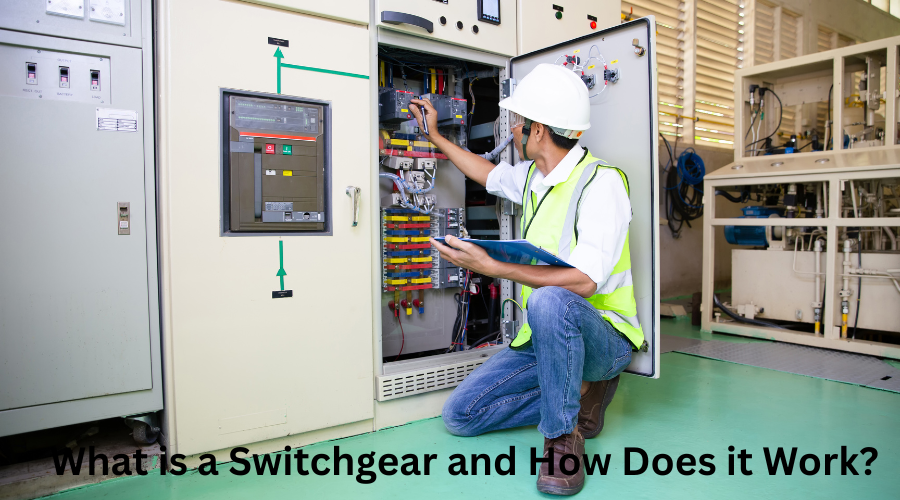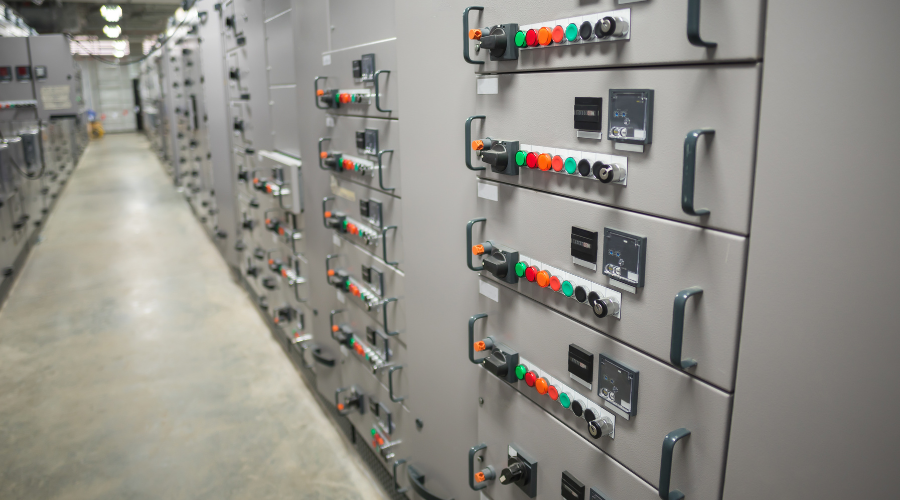


Switchgear is very important for managing electrical power systems. It is used in factories, commercial buildings, and utility networks. Switchgear is important for isolating electrical equipment. It contains parts such as circuit breakers, fuses, switches, and relays. The main thing is that all are made to track the flow of electricity when required.
A switchgear regulates, safeguards, and isolates a power system. It contains a variety of controls housed in a metal enclosure.
Switchgear is often used in industries where they face electrical faults. Or a switchgear is for those who require daily de-energizing for equipment upkeeping. They can be industrial environments and electrical utilities.
Switchgear possesses fuses, switches, and other power conductors. However, circuit breakers also exist in the switchgear and are mostly used in it. During an electrical issue, a circuit breaker will catch the anomaly and cease the power flow. It also reduces damage to the system.
It is structured to control the power flow. Switchgear plays an important part in improving a facility’s energy efficiency and safety.
For more details you can read our blog:
what are the type of switches?
Switchgear is designed with diverse interconnecting parts that change depending on the particular application. Below are the main components of a switchgear.
The job of a circuit breaker is to protect electrical systems from overloads, short circuits, and electrical issues. They work by ceasing the electrical current when a fault or overcurrent happens. The main job of a circuit breaker is to ensure the safety and trustworthiness of the entire electrical network.
Fault interrupters are mechanical devices that are controlled by themselves. They can make, carry, and switch on-going current. They can also catch and automatically interrupt fault currents. This happens without the ability to reclose all by itself. These devices have a set of control elements that catch overcurrents and manage the fault interrupter.
The main function of disconnect switches is to enable safe upkeeping or fixing up on isolated equipment. These switches function by actually disconnecting electrical equipment from the power supply. This happens when it gives an important measure during upkeeping activities.
The job of fuses is to serve as protective devices that protect electrical circuits and equipment from overcurrent conditions. Their main job is to cease the electrical current when it crosses a predetermined level.
The job of relays is to serve as monitors and controllers of the electrical parameters within the system. Their main duty is to protect and automate the switchgear system. It also ensures a swift response to unusual conditions and upkeeping the overall integrity of the electrical network.
The control panel is the head of all components. It is the monitoring hub for electrical circuits and equipment. They give operators the tools to manage and motor several functions. They have several control devices. However, they have indicated lamps and monitoring equipment necessary for the operation and supervision of the switchgear.

Switchgear functions by isolating particular parts for upkeep or fixing up. It controls the electrical power flow via fault interrupters, circuit breakers, and switching devices. When a fault occurs, the switchgear rapidly isolates the problem while keeping the other parts of the system energized. When the problem is solved, you can energize the circuits safely once again. Safety attributes are important to switchgear working, with overcurrent safeguard playing a pivotal role in preventing harm from extra current flow in a circuit.
Switchgear is used in several applications. It is to ensure that the electrical systems operate safely and efficiently:
Power Generation: Switchgear controls the flow of electricity from the generators to the network in power plants. It safeguards equipment from faults and allows upkeep without interrupting service.
Transmission and Distribution: Switchgear is a requirement in substations where it assists in control of flow of electricity. This occurs between higher voltage transmission lines and low-voltage distribution nets.
Industrial Facilities: Industrial plants and factories use switchgear to protect their machine. They apply switchgear to guarantee secure functioning of dynamic units.
Commercial Buildings: In commercial buildings, switchgear gives trustworthy power distribution and protection for electrical systems. It does this by ensuring the undisrupted operation of complex infrastructure.
Renewable Energy Systems: Switchgear is used in wind farms, solar energy facilities, and other sustainable energy installations. It is to safeguard against electrical issues.
Thus, this was the guide to the end regarding what switchgear is and all the significant things about it. Electricity is however distributed safely by the switchgear to various locations. Reading this blog, you must have got the idea of the purpose and applications of switchgear. Therefore, use this guide and make it the fullest.
Q1. What is the main function of switchgear?
The main function of a switchgear is to control, protect, and disconnect electrical equipment and circuits within a power system.
Q2. Is switchgear the same as a circuit breaker?
No, a switchgear and a circuit breaker are not the same. They have their own individual functions.
Q3. What distinguishes LV, MV, and HV switchgear?
LV switchgear is for voltages up to 1 kV, MV switchgear handles voltages from 1 kV to 36 kV, and HV switchgear is used for voltages above 36 kV.
Q4. How often should switchgear be inspected or maintained?
Check it by only seeing it after every year. Test it after every 3 to 5 years. You can also do it more frequently if needed.
Q5. Can switchgear be used in renewable energy systems?
Yes, switchgear can be used in renewable energy systems.
Q6. Why is it important to buy from a reputable switchgear cabinet supplier?
A reliable supplier will provide you with premium products and never cheat you.
The advent of smart grids has changed how electric power is produced, distributed, and consumed.
READ FULLHigh Voltage Switchgear It is a
READ FULLTransformer substations are like the core of our electrical systems. They transfer power to our h
READ FULL